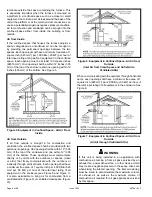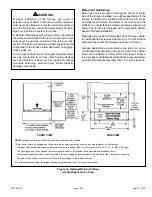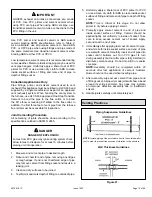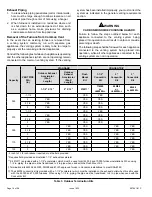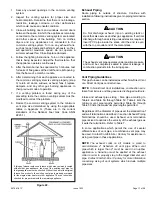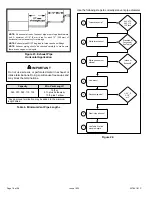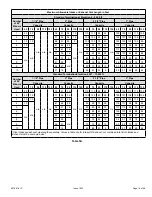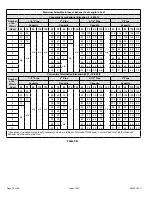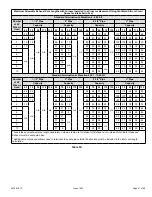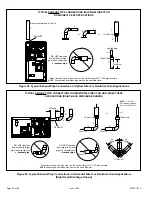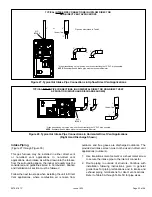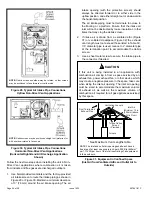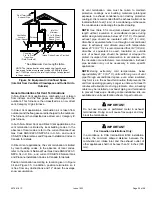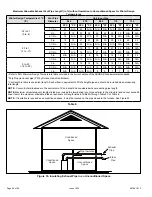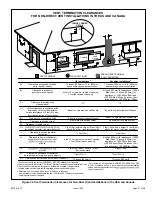
507961-01P
Page 17 of 58
Issue 1933
1. Seal any unused openings in the common venting
system.
2. Inspect the venting system for proper size and
horizontal pitch. Determine that there is no blockage,
restriction, leakage, corrosion, or other deficiencies
which could cause an unsafe condition.
3. Close all building doors and windows and all doors
between the space in which the appliances remaining
connected to the common venting system are located
and other spaces of the building. Turn on clothes
dryers and any appliances not connected to the
common venting system. Turn on any exhaust fans,
such as range hoods and bathroom exhausts, so they
will operate at maximum speed. Do not operate a
summer exhaust fan. Close fireplace dampers.
4. Follow the lighting instructions. Turn on the appliance
that is being inspected. Adjust the thermostat so that
the appliance operates continuously.
5. After the main burner has operated for 5 minutes, test
for leaks of flue gases at the draft hood relief opening.
Use the flame of a match or candle.
6. After determining that each appliance connected to
the common venting system is venting properly, (step
3) return all doors, widows, exhaust fans, fireplace
dampers, and any other gas burning appliances to
their previous mode of operation.
7. If a venting problem is found during any of the
preceding tests, the common venting system must be
modified to correct the problem.
8. Resize the common venting system to the minimum
vent pipe size determined by using the appropriate
tables in Appendix G. (These are in the current
standards of the National Fuel Gas Code ANSI
Z223.1.)
Figure 22.
If this gas furnace replaces a furnace which was commonly vented
with another gas appliance, the size of the existing vent pipe for
that gas appliance must be checked. Without the heat of the original
furnace flue products, the existing vent pipe is probably oversized
for the single water heater or other appliance. The vent should be
checked for proper draw with the remaining appliance.
Exhaust Piping
Route piping to outside of structure. Continue with
installation following instructions given in piping termination
section.
Do Not discharge exhaust into an existing stack or
stack that also serves another gas appliance. If vertical
discharge through an existing unused stack is required,
insert PVC pipe inside the stack until the end is even
with the top or outlet end of the metal stack.
CAUTION
The exhaust vent pipe operates under positive pressure
and must be completely sealed to prevent leakage of
combustion products into the living space.
CAUTION
Vent Piping Guidelines
This gas furnace can be installed as either Non-Direct Vent
or a Direct Vent gas central furnace.
NOTE:
In Non-Direct Vent installations, combustion air is
taken from indoors and flue gases are discharged outdoors.
Intake and exhaust pipe sizing - Size pipe according to
Table 4 and Table 5A through Table 5C. Table 4 lists the
minimum vent pipe lengths permitted. Table 5A through
Table 5C lists the maximum pipe lengths permitted.
Regardless of the diameter of pipe used, the standard roof
and wall terminations described in section Exhaust Piping
Terminations should be used. Exhaust vent termination
pipe is sized to optimize the velocity of the exhaust gas as
it exits the termination. Refer to Table 7.
In some applications which permit the use of several
different sizes of vent pipe, a combination vent pipe may
be used. Contact Comfort-Aire / Century for assistance in
sizing vent pipe in these applications.
NOTE:
The exhaust collar on all models is sized to
accommodate 2” Schedule 40 vent pipe. When vent
pipe which is larger than 2” must be used in an upflow
application, a transition must be applied at the exhaust
collar in order to properly step to the larger diameter vent
pipe. Contact Comfort-Aire / Century
for more information
concerning sizing of vent systems which include multiple
pipe sizes.






